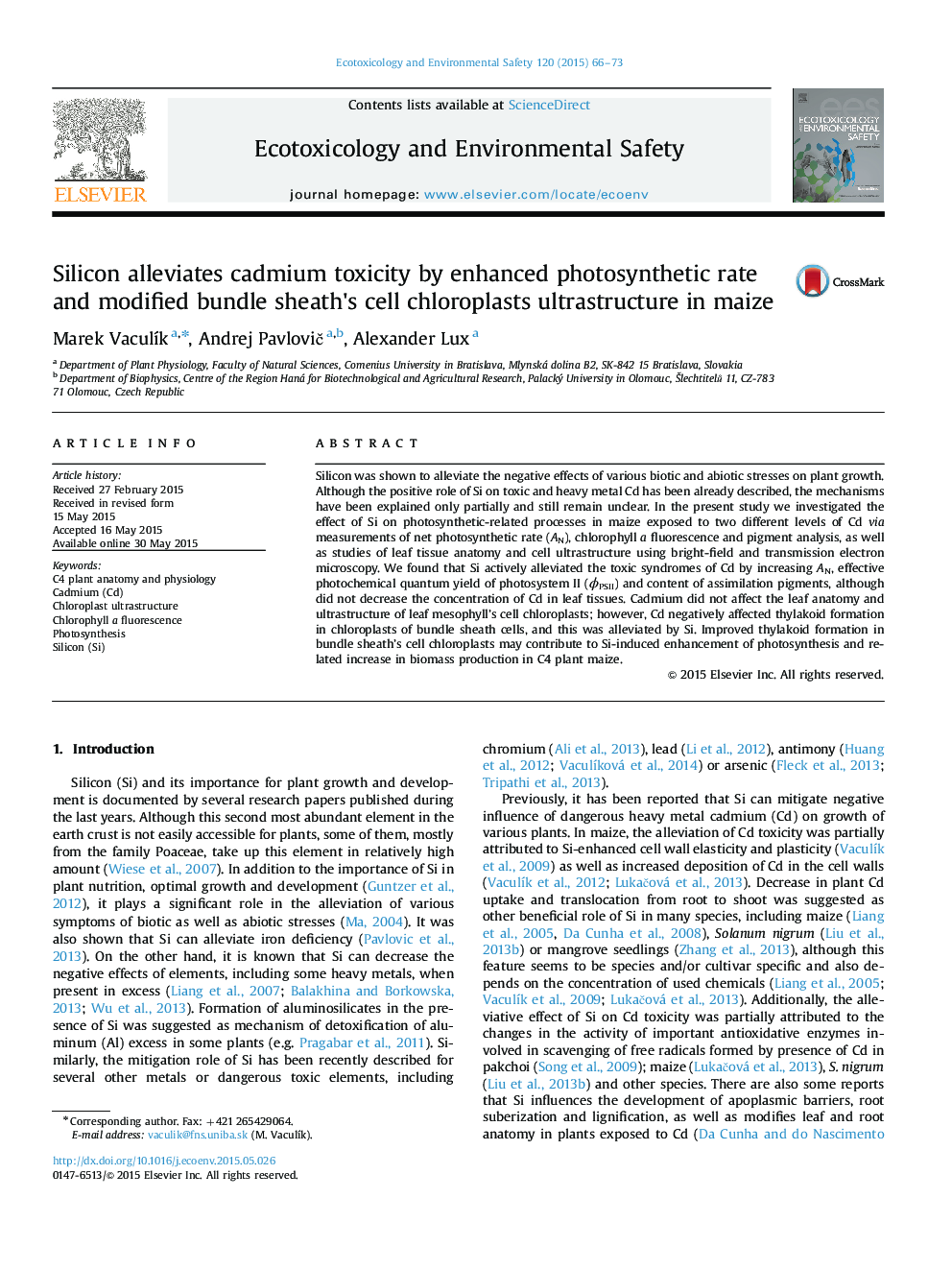| Article ID | Journal | Published Year | Pages | File Type |
|---|---|---|---|---|
| 4419409 | Ecotoxicology and Environmental Safety | 2015 | 8 Pages |
•Cd negatively affected growth of young maize plants.•Si increased rate of photosynthesis and biomass production in Cd+Si treated plants.•This might be due to enhanced thylakoid formation in bundle sheath's cell chloroplast.
Silicon was shown to alleviate the negative effects of various biotic and abiotic stresses on plant growth. Although the positive role of Si on toxic and heavy metal Cd has been already described, the mechanisms have been explained only partially and still remain unclear. In the present study we investigated the effect of Si on photosynthetic-related processes in maize exposed to two different levels of Cd via measurements of net photosynthetic rate (AN), chlorophyll a fluorescence and pigment analysis, as well as studies of leaf tissue anatomy and cell ultrastructure using bright-field and transmission electron microscopy. We found that Si actively alleviated the toxic syndromes of Cd by increasing AN, effective photochemical quantum yield of photosystem II (ϕPSII) and content of assimilation pigments, although did not decrease the concentration of Cd in leaf tissues. Cadmium did not affect the leaf anatomy and ultrastructure of leaf mesophyll’s cell chloroplasts; however, Cd negatively affected thylakoid formation in chloroplasts of bundle sheath cells, and this was alleviated by Si. Improved thylakoid formation in bundle sheath’s cell chloroplasts may contribute to Si-induced enhancement of photosynthesis and related increase in biomass production in C4 plant maize.
